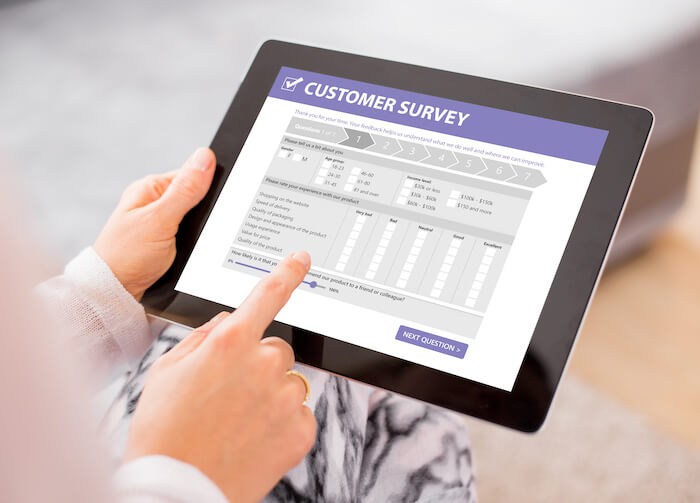Customer journey mapping is a process that helps businesses understand the path that customers take before, during and after making a purchase. It’s a powerful tool for conversion optimization because it allows you to see your operations from the customer’s perspective, which in turn helps you identify areas for improvement and create a more seamless and effective experience.
How to Map Your Customer Journey in 5 Steps
- Define your target personas
- Identify touchpoints
- Gather data
- Analyze the data
- Map the journey
Define your target persona

Identify the different types of customers that you have and create personas for each segment. Personas are fictional representations of your ideal customers created by identifying their shared characteristics. A persona should include information such as demographics, behavior patterns, needs, goals and motivations. With personas, you can gain a deeper understanding of what drives your customers and what pain points they might face.
Identify touchpoints

A customer journey consists of dozens of touchpoints, or interactions with your business. Most marketers broadly group these touchpoints into five stages:
- Awareness
- Consideration
- Decision
- Retention
- Advocacy
List all the different points of interaction your customers have with your business in each stage. This could include website visits, interactions via social media, email communication, phone calls and in-person interactions. Be sure to note if the touchpoint involves a certain area of your team, such as calling a sales representative for a quote and consider how each interaction connects.
Gather data

Collect data on customer interactions at each of these touchpoints. You can gather data in various ways, including surveys and interviews, which are ideal for collecting qualitative data such as customer feedback, or analytics, which provide quantitative data on customer behavior. For instance, behavior analytics tools, such as Microsoft Clarity or HotJar, can provide key information on how your customers interact with your site by allowing you to observe session replays and heatmaps.
Analyze the data

Look for patterns and trends in the data. Identify any pain points or roadblocks customers are experiencing by looking for instances where a high percentage of customers abandon a certain step in the process or where a high percentage of customers report dissatisfaction with a particular aspect of the experience. For example, if you notice a large number of your customers are abandoning their cart during checkout, that data is a good indicator that you need to examine which specific aspects of your checkout process might be frustrating for your user.
Map the journey

Use the information you’ve gathered to create a visual representation of the customer journey, including all the touchpoints and key decision points. There are a number of tools you can use to create a visually appealing map of your customer journey, including Miro, LucidChart, Figma and FlowMapp.
No matter which tool you choose, it is important to remember that the most important aspect of mapping the customer journey is to accurately represent each touchpoint and decision point that a customer goes through and how they connect to one another.
The Importance of Customer Journey Mapping for Conversion Optimization
One of the primary benefits of customer journey mapping is that it allows you to gain valuable insights into what drives customer decision-making. By putting yourself in the customer’s shoes, you can better understand what factors influence consumer behavior and identify any potential pain points that may be preventing customers from converting.
Once you have a clear understanding of its steps, you can start optimizing various touchpoints along the way to streamline your customer journey. Depending on your primary areas of concern, this might include adjusting content to improve local SEO, simplifying your website’s navigation, or streamlining your checkout process.

For example, if you notice that a high percentage of customers are dropping off during the registration process, this could indicate that the registration process is too long or too complex, causing customers to abandon the journey. In that case, you could work on simplifying this process and reducing friction to increase conversion rates.
Once you’ve implemented a change, be sure to track its impact on customer behavior. A/B testing is an effective way to determine which changes have the biggest impact. Continuously gathering feedback and data to measure the effectiveness of your optimization efforts and making further improvements is a process known as iteration. Ideally, each adjustment you make should move the needle towards higher conversion rates, but you may need to make several rounds of changes to see the results you desire.
A good place to start is by researching best practices for conversion rate optimization and identifying which tried-and-true tactics can be applied to your business. It’s important to remember that this isn’t a one-and-done process — it’s a continuous effort to keep up with customers’ ever-changing needs.
In conclusion, customer journey mapping is an essential tool for conversion optimization. By taking the time to understand customers and their needs, businesses can create a more effective and efficient conversion process, ultimately boosting their bottom line and driving greater success.
If you’ve mapped your customer journey and need some expert guidance on what your next steps should be, feel free to give us a call. We’d be happy to help analyze your customer journey and make recommendations for optimizations that can turn more visitors into customers.






